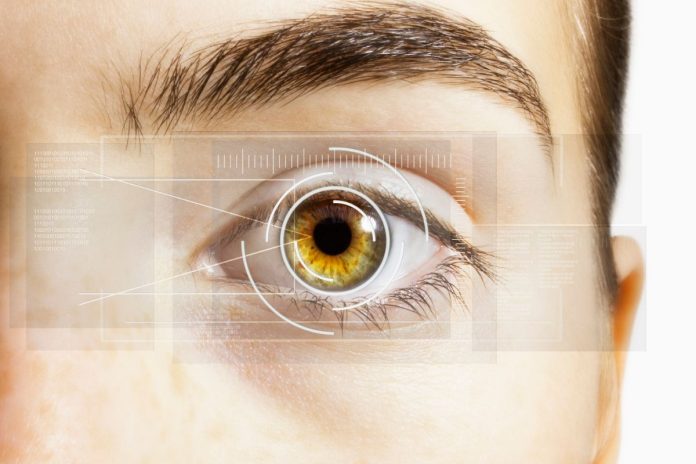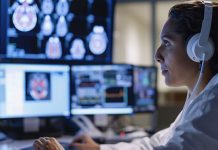Ensuring the integrity of sensitive information has become more essential than ever before, as fraudsters are turning no stone unturned to fulfill their illicit goals. Advanced identity verification technologies are continuously getting sophisticated to accurately verify genuine identities and deter deceptive individuals. Biometrics Iris scan are unique traits of human beings unique to each person better termed as the gateway to the future of ID verification are now employed by almost every sector globally to ensure seamless authentication and enhance user safety. Of all biometric modalities including fingerprints, facial features, and palm scans; the iris & retina come forth as the most accurate biometric identifiers due to high accuracy and precision.
Exploring Iris Scan Authentication
Iris is the colored portion of the eye and unique to each individual. It is also termed a kaleidoscope of colors and patterns consisting of three primary types of iris patterns. Iris scan is a widely adopted authentication method globally for its enhanced security and non-invasive nature. Iris scan technology offers contactless identity verification with a very low false acceptance rate (FAR), counting one in 1.2 million. Facial detection and recognition through Iris verification enable owners to identify the person in a very short time and single out one of a million of the population at a very high speed and accuracy standards. An integral component of modern biometric technology is the fact that the unique iris pattern of each eye offers arguably the highest standard of security when it comes to the red lights of fraud and identity spoofing.
Iris Scan Technology: Working Principle
It is a very special biometric system that works in conjunction with an infrared video camera which assists in capturing and analyzing the most complex structure of an iris and employs an automated approach to achieve pleasant and quick results. An adapted camera employing both visual & near infrared radiant rays that help in high-contrasting precise imaging of iris patterns. The cameras work very clearly involving the pupil from the iris and getting what they claim to be the correct part of the eye. The inner and outer pupil circumferences, as well as the edges between the pupil and iris, are found, and the image of all the details is recorded.
The next phase is carried out with iris recognition software that gathers the data and then correlates it to make an iris pattern out of it. Apart from being a work of art for humans, irises codes are the unique and combined codes of all people in existence, and each code is unique to each person who is born. Owing to its high accuracy, fast speed, and precision, the iris recognition scanner stands as the most accurate biometric identifier after the retina scan, which stands first in this race.
Which Industries are Widely Adopting Iris Scan Technology?
Owing to its unparalleled security and accuracy, iris verification technology is being employed by numerous sectors globally and playing a pivotal role in verifying identities. Many sectors including healthcare, crime investigation, FIs, access control, and finance have implemented iris scan technology. The practical implementation and working of iris scan authentication in a few of the industries are briefly expanded here
Law Enforcement Agencies
One can say that law enforcement and crime investigation organizations in countries have been vendors since the 1890s. Technology advancement and communities’ needs are going up and, consequently, the use of iris recognition eyes has increased markedly within the policing company. Biometric data is heavily used to help the police identify suspects and arrest them. The iris is the best choice for biometric identification and can be used to verify identity during emergencies if deploying other means is not possible. In the first place, iris identification, besides utilizing ID verification is also in forensic analysis as the iris prints are very stable and unique to an individual.
Access & Border Control
Using this specific pattern of the eye being considered to be daunting to imitate, iris verification is used in these systems such as the ones used at the borders and in immigration. The human recognition iris technique is perceived to be very beneficial to access and border control systems since it ensures high accuracy, worldwide interoperability, and the ability to integrate into database systems. In addition, it can also facilitate border checks that are effectively done by enabling border control services to maintain an optimal distance for a large volume of individuals that has to be verified.
Financial Institutions
Iris scan technology adds an extra layer of security to the integrity of financial transactions and minimizes the risks of unauthorized entry into financial systems. FIs can enhance their fraud detection & prevention strategies by leveraging iris verification, which dominates traditional methods of ID verification such as asking for passwords and requiring physical presence. Most important of all, FIs can fully comply with legal standards and requirements of ID verification like Know-your-customer (KYC) and anti-money laundering (AML) laws.
Healthcare Industry
Iris scans assist healthcare facilities in accurately verifying the identity of patients and lower the chances of medical errors, thereby ensuring patient security. This highlights the fact that medication and medical treatments are administrated to actual patients and unauthorized entries are deterred. The sensitive information of patients, medical history, and records are safeguarded and access to prohibited areas is controlled by using iris recognition technology.
Future of Iris Scan Technology
Iris scan technology is likely to gain much more attention shortly and many sectors globally are getting ready to adopt this technology. Driven by ongoing research and technological advancements, the integration of advanced AI and machine learning algorithms would further enhance the accuracy of iris verification. As iris patterns are hard to replicate, the concerns regarding privacy and security may also be mitigated by employing this technology.





